- Therapeuten
Acupuncture Celestial Stems & Terrestrial Branches
Wu Yun Liu Qi - The Philosophy & Physiologie of Acupuncture
- Verlag: Kervel
- ISBN: 9789079212033
- 2nd ed. 2017, 514 pages
99,00 €
inkl. MwSt.
plus Versandkosten
Abhängig von der Lieferadresse kann die MwSt. an der Kasse variieren.
Lieferzeit: currently not avalable.
Nicht vorrätig
Beschreibung
Acupuncture – Celestial Stems & Terrestrial Branches by Peter C. van Kervel is a must for students, teachers and acupuncturists because it explains the basic concepts and treatment principles, as written in the Nei Jing, of acupuncture.
This book is one of a series of books, which will introduce the acupuncture practitioner into the field and knowledge, of the Wu Yun Liu Qi acupuncture, as described in the Nei Jing Su Wen & Ling Shu and Nan Jing. This way of acupuncture is known as Stems & Branches.
The books published are an introduction to Wu Yun Liu Qi acupuncture, in order to benefit practitioners and patients all over the world.
This book will introduce the practitioner into the physiology and philosophical principles of the most anvient and original acupuncture.
This philosophy and the practical application of acupuncture, will be explained extensively in this book.
Prologue
Introduction
Chapter 1: Causes of Diseases
Chapter 2: Development of Diseases
Chapter 3: Channel Systems
Chapter 4: QÌ development in Pathology
Chapter 5: Cancer
Chapter 6: Treatment Principles
Chapter 7: Treatment Strategies & Treatment Plans
Chapter 8: General Methods of Treatment
Chapter 9: Methods of Treatment
Chapter 10: Specific Methods of Treatment
Chapter 11: Xiangsheng QÌ Preventative
Chapter 12: Miscellaneous Groups of Points
Chapter 13: MiscellaneousTechniques
Chapter 14: Recapitulation Quantity & Quality
Chapter 15: Withdrawal of The Needles
Chapter 16: Moxa
Chapter 17: Forbidden Points
Chapter 18: Diagnostic Areas & Points
Terminology: Pin Yin – Chinese – English | English – Pin Yin – Chinese
Index
Content of the Book
Chapter 1
| Qì | Yin | Yáng |
Initially, there is only qì, universal qì. Qì is unique and undifferentiated, the source of anything in creation. Chinese medicine uses metaphorical principles to explain the different qualities and aspects of qì. There is a conceptual idea of pre-heavenly qì, connected to the ancestors and hereditary aspects. The process of creation is the moment of existence of qì. This omnipresent qì is the foundation of anything and all beings.
Chapter 2
| Pre-Heaven Qì | Xian Tian Qì
Qì is rooted in heaven or pre-heaven, and reveals itself, as expressed within Chinese characters. Throughout history, the inner meaning of the different Chinese characters changed due to a changed opinion, political influences, or ordered by an emperor. The sources are the several translations of the Nèi Jing and the work of modern sinologist, who write about Chinese history and the etymology of characters. This chapter tries to unravel the different types of qì connected to pre-heaven and to give an etymological introduction and explanation.
Chapter 3
| Qì | Jing | Shén | San Bao
Part of the pre-heaven qì is the concept of the san bao, three treasures, qì jing – shén. They deserve a chapter on their own, as one of the most important doctrines of Chinese medicine. Qì is the foundation of anything, jing essence, is the essence that makes it possible for qì to be, while the shén spirits, is the root of the different aspects of the five spirits, which are present in the human being.
Chapter 4
| Qì | Li | Shù |
One of the most ancient concepts and principles in Chinese medicine, is the trinity of qì, li, and shù. On a most banal way, these terms could be translated as energy, laws, and numbers. From the unique oneness, the qì itself, there will be a development into the number two. The yin and yáng way of expression of the initial qì, presents the number two. The qì, li and shù in itself, presents the number three, as does the trinity of treasures, san bao, from heaven. Yin and yáng develop into potential and ultimate yin and yáng, as representatives of the number four. These four original qualities of qì, are rooted within the centre and are the force behind the four emanations yuán, heng, lì, and zhen, rooted in qián, to complete number five. From the number five it is a small step to reach the number ten, as five in a yin and yáng phase there are the ten heavenly stems. Number five also develops into number six, the liù qì, six qì. They form the foundation behind the six climates, six divisions, and the twelve earthly branches. Within all described above there are specific laws active, which is the li. Chapter 4 will present all of this.
Chapter 5
| Qì | Heaven | Earth |
After an introduction of qì, li and shù, the book continues to elaborate upon the concepts of heaven and earth, or pre-heaven and post-heaven. What is the relationship between them? How does the qì of heaven present itself on earth? Heaven is creating earth, as space is enhancing the flow of time. The concept of heaven is connected to space, as the concept of earth, or post-heaven, is connected to time. Space reveals itself initially into four corners, with a centre and a three dimensional aspect. The centre is the representation of the heaven and is called qián. From this centre, the qì is emanating into four directions. The four directions are dividing space, and are named the four emanations yuán, heng, lì, and zhen. These four heavenly forces, emanating from the centre, are the source for the ten celestial stems. All of this belongs to the concept of space.
Chapter 6
| Tài Jí | Space | Qián | Yuán | Heng | Lì | Zhen
From the tài jí, the great supreme, into four directions the universe expands. The four directions are the four emanations yuán, heng, lì, and zhen. The centre, the representative of the tài jí, is named qián. This gives a total of five initial forces or the five elements. They are the basis, the root for anything created in heaven and on earth. From each of those archetypes, all kinds of aspects are created in the macrocosm and microcosm. Those five Chinese archetypes, qián, yuán, heng, lì, and zhen, are the first five characters of the oracle book Yi Jing Book of Changes. Each of those five principles is responsible for many connected aspects, such as a direction, a colour, a season, a couple of organ, one of the five senses, etcetera. The manifestations of the four emanations, with its centre, create in a yin and yáng way the ten celestial stems.
Chapter 7
| Ten Celestial Stems | Shí Tian Gan
In this chapter, the ten celestial stems will be explained in detail. The etymology of the Chinese character of each of the ten stems, their inner meaning, relationship with nature and with the physical body, will be elaborated upon. The ten stems have a specific order, are connected as couples of stems, and last but not least, they have a mutual balancing relationship with one another.
Chapter 8
| Tài Jí |Time Qián | Yuán | Heng | Lì | Zhen
This chapter returns to the basic concept of the four emanations, with its centre. In chapter 6, the existence of space was explained. The same initial concept of the four forces, will create time. Time in space initiated by movement and sequence. From the same four emanations, with its centre, it is possible to explain the order of the twelve terrestrial branches.
Chapter 9
| Twelve Terrestrial Branches | Èr Dì Zhi
After the concept of time is brought to life in chapter 8, the twelve terrestrial branches will be explained in this chapter. The etymology of the Chinese characters of the twelve branches and their inner meaning, relationship with nature and organs, is explained. The earthly branches have a specific order, as complementary to the heavenly stems. Within the order of the earthly branches, there are many suborders, smaller cycles, and inner connections. The most important trait of the branches, is their connection with a specific qì of a season. This will make the physiological function of the organ, related to that branch, clearer.
Chapter 10
| Universal Qì | Personal Qì
As there is a stem and a branch of the year, there are also stems and branches of the month, day, and hour. These form the four pillars as a foundation for a being. In clinical practise, they are not used in the same way. How, and when they will be used, will be explained. The four pillars determine the personal and the universal qì. The personal qì is fixed, will not change for an individual person, while the universal qì changes constantly.
Chapter 11
| Qì | Jing | Shén
In chapter 3 the san bao, qì, jing, and shén, are introduced. This trinity is from pre-haven origin. The qì, jing, and shén, are going to function as couples in the post-heaven. Those couples are jing qì, jing shén, shén qì, and their function and role will be explained in this chapter. Furthermore, there will be a short introduction to the five spirits, shén, hún, pò, yì, and zhì. Two of those five spirits incarnate from heaven, two are connected to earth, and in the merging of these four spirits, exists number five, the yì.
Chapter 12
| Post Heaven Qì | Hòu Tian Qì
As in chapter 2, the concept of pre-heaven is discussed, chapter 12 will elaborate on the post-heaven concept, with all the different types and qualities of qì. The pre-heavenly qì is going to function as post-heavenly qì. What connects between these two realms, are qì, jing, shén, presenting themselves as couples. There are different types of post-heavenly qì. All of them will be explained, the etymology will be clarified, as well as their role and function in the human being.
Chapter 13
| Transformation of Shui and Gu into Qì
Qì needs to be maintained and is transformed out of food and drinks, in order to nourish men. The Chinese concept has its own way of explaining this process, while western physiology describes this process from another perspective. This chapter will present this process of digestion of food, from both perspectives, uniting the different views.
Chapter 14
| Six Qì | Liù Qì
The heavenly stems are introduced in the beginning of the book, followed by the earthly branches. These are the heavenly and earthly part of the wu yùn liù qì, while the actual wu yùn liù qì are the liù qì, the six types or qualities of qì, metaphorically presented as the six climates. This is a vast subject and a long chapter. This is followed in the next chapter (15) by the wu yùn aspect of the wu yùn liù qì, or the five phases, better presented as the wu xíng. The liù qì has many aspects, and is a immense subject within the Nèi Jing Sù Wèn. All aspect will be discussed, presented in an ordered way, in a metaphorically order of the liù qì of heaven, liù qì of earth, and liù qì of man.
Chapter 15
| Five Transformation Phases | Wu Xíng
The wu xíng is the practical tool in the daily life of the clinic. With the use of the principles and rules of the wu xíng, as explained in this chapter, the practitioner can influence the qì with acupuncture. As an introduction all the different five phases will be discussed. The etymology of the Chinese characters is a returning item in this book, so also for each of the five phases. Furthermore, their function within the body and mind will be explained. Last but not least, the two main principles functioning within the wu xíng, the sheng generating cycle, and the kè action – controlling and harmonising action.
Chapter 16
| Channel System | Jing Luò Mài
This chapter will present the different channel systems, jing luò mài, and all the different types of points.
There are four channels systems, linked by the connective channel system. Each of the channel system is connected to one of the four emanations, while the connective channel system relates to the centre, qián. The channels systems are: jing jin tendo-muscular channels, jing mài main channels, jing bié divergent channels, ba qi jing mài eight extra ordinary channels, and luò mài connective channels. Furthermore, twenty-two groups of points will be presented, and their function will be discussed.
Chapter 17
| Chinese Calendar | Rì Lì
This chapter will give an introduction to the Chinese calendar.
All the charts, which show how to calculate the stem and branch of the year, month, day, and hour, are found. Most charts are valid until 2043, 2044 is the beginning of a new cycle of 60 years. A new edition of the book will be published then. This chapter is full of tables, dates of the beginning of the new moon from 1924 until 2043, and formulas as how to calculate for instance, the stem of the day. Those charts are undeniable a necessity for the clinic of the wu yùn liù qì practitioner.
Chapter 18
| Acupuncturist | Zhen Jiu Yi Shi |
The last chapter discusses in a very thorough way, the complete process of a treatment with all the tools of the wu yùn liù qì. There will be three different cases studied. The process begins with the interview and ends with analyzing the chart of the year and four pillars of the patient. Initially, the personal qì of the patient will be discussed, with all the strong and weak aspects of the constitution of the patient, and all the dos and donts. From here, a treatment strategy will be planned. In each of these cases, there will be examples of treatments on different days, and on different hours of the day. Besides this, the same case, diagnosis, will be discussed, but with all the information of another person, born on another day, with different constitutional qì, and treated on different days and hours. This is the art of wu yùn liù qì, how to treat a patient in a personal way.
Autor
Bewertungen (0)
You must be <a href="https://www.naturmed.de/mein-konto/">logged in</a> to post a review.

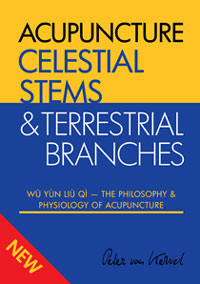

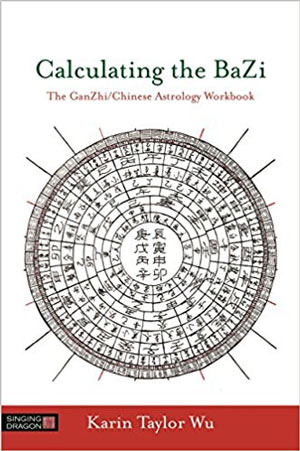
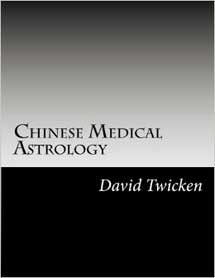
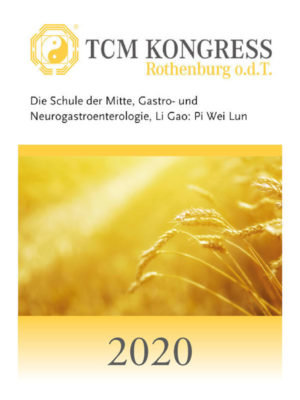
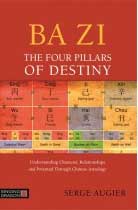
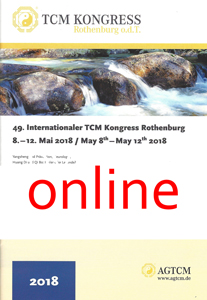
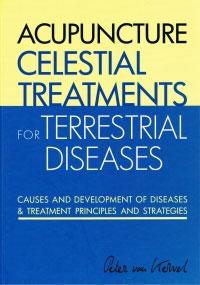
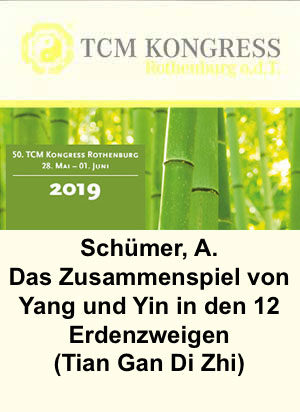
Bewertungen
Es gibt noch keine Bewertungen.